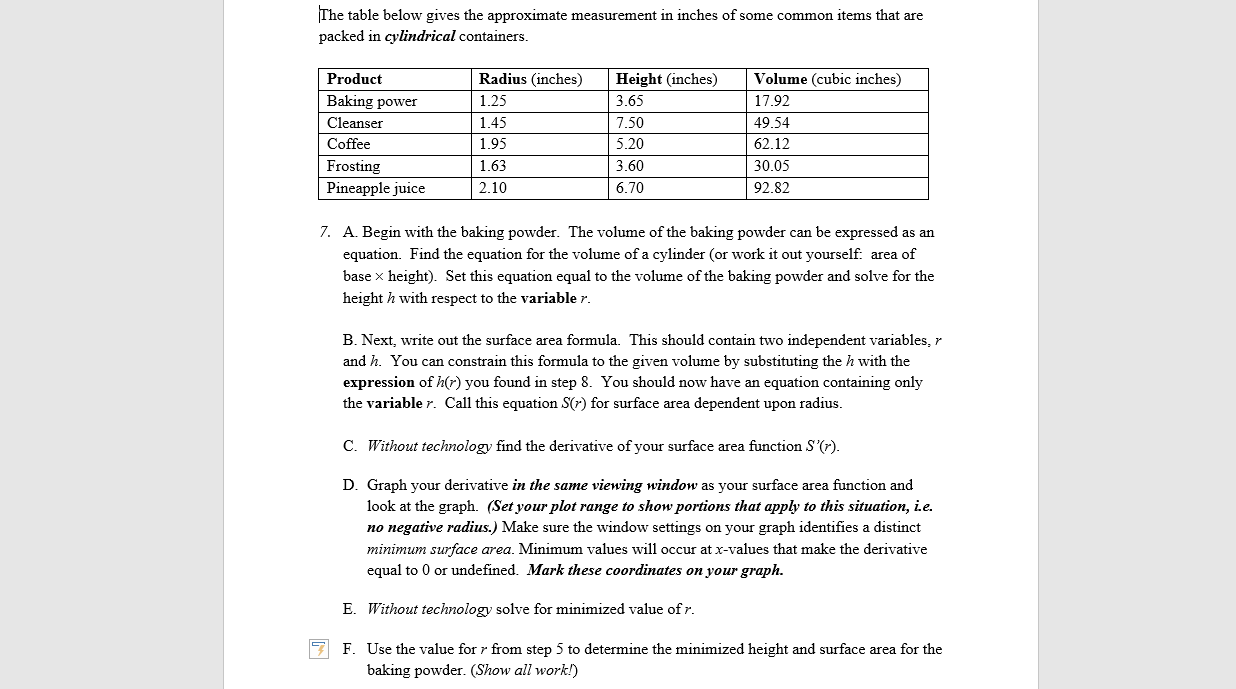The table below gives the approximate measurement in inches of some common items that are packed in cylindrical containers. Radius (inches) Volume (cubic inches) Product Height (inches) Baking power 1.25 3.65 17.92 1.45 7.50 Cleanser 49.54 Coffee 1.95 5.20 62.12 Frosting 1.63 3.60 30.05 2.10 6.70 Pineapple juice 92.82 7. A. Begin with the baking powder. The volume of the baking powder can be expressed as an equation Find the equation for the volume of a cylinder (or work it out yourself. area of base x height). Set this equation equal to the volume of the baking powder and solve for the height h with respect to the variable r. B. Next, write out the surface area formula. This should contain two independent variables, r and h. You can constrain this formula to the given volume by substituting the h with the expression of h(r) you found in step 8. You should now have an equation containing only the variable r. Call this equation S(r) for surface area dependent upon radius. Without technology find the derivative of your surface area function S'(7). C. D. Graph your derivative in the same viewing window as your surface area function and look at the graph. (Set yourplot range to show portions that apply to this situation, i.e. no negative radius.) Make sure the window settings on your graph identifies a distinct minimum surface area. Minimum values will occur at x-values that make the derivative equal to 0 or undefined. Mark these coordinates on your graph. E Without technology solve for minimized value ofr F. Use the value for r from step 5 to determine the minimized height and surface area for the baking powder. (Show all work!)
Unitary Method
The word “unitary” comes from the word “unit”, which means a single and complete entity. In this method, we find the value of a unit product from the given number of products, and then we solve for the other number of products.
Speed, Time, and Distance
Imagine you and 3 of your friends are planning to go to the playground at 6 in the evening. Your house is one mile away from the playground and one of your friends named Jim must start at 5 pm to reach the playground by walk. The other two friends are 3 miles away.
Profit and Loss
The amount earned or lost on the sale of one or more items is referred to as the profit or loss on that item.
Units and Measurements
Measurements and comparisons are the foundation of science and engineering. We, therefore, need rules that tell us how things are measured and compared. For these measurements and comparisons, we perform certain experiments, and we will need the experiments to set up the devices.
Only problem I'm stuck on for this assignment please help!

Trending now
This is a popular solution!
Step by step
Solved in 6 steps with 5 images









